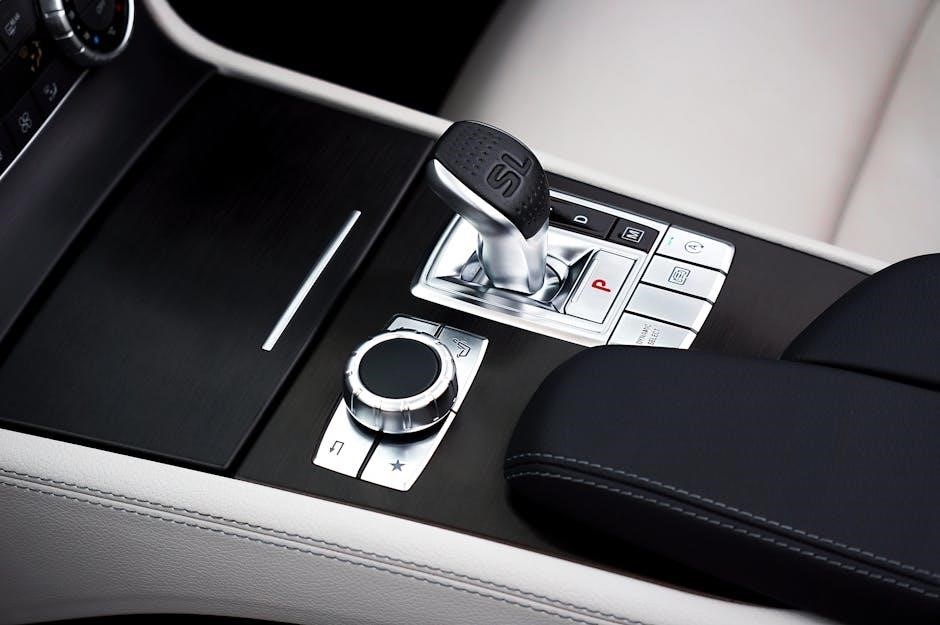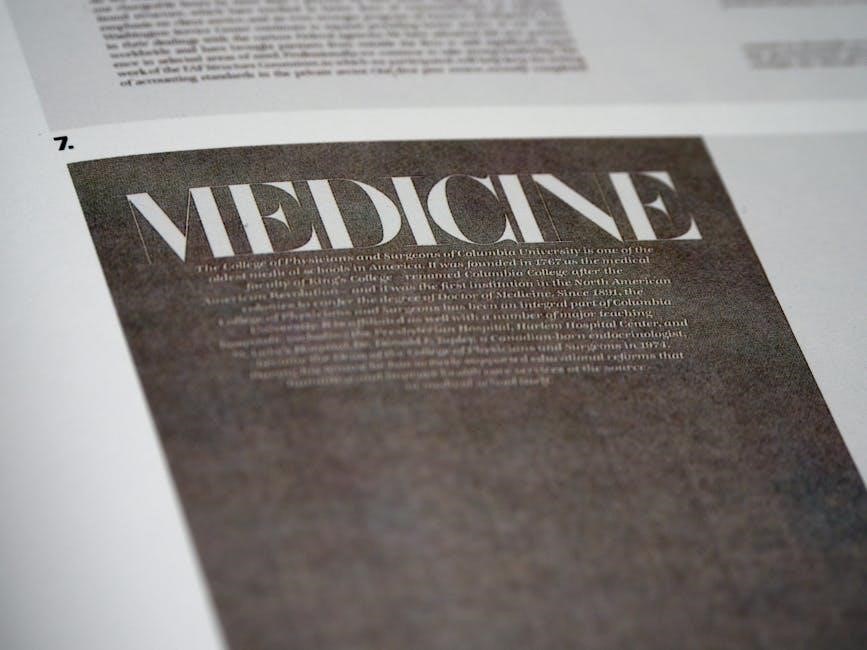Automatic and manual cars differ in how gears are shifted, impacting driving experience and efficiency․ Automatics offer ease, while manuals provide control, each catering to distinct preferences and needs․
What Are Automatic and Manual Cars?
A manual car requires the driver to manually change gears using a clutch pedal and gearshift, offering full control over acceleration and deceleration․ In contrast, an automatic car automatically shifts gears without driver input, using a torque converter to ease transitions between speeds․ While manual transmissions provide better fuel efficiency and driver engagement, automatics are more convenient, especially in heavy traffic․ Both systems have distinct mechanical designs, with manual transmissions relying on driver skill and automatics on complex hydraulic systems․ Understanding these differences helps drivers choose the right vehicle based on their lifestyle, driving habits, and preferences․
Brief History of Transmission Systems
The evolution of car transmissions began in the late 19th century with manual systems, initially using non-synchronized gears․ The 1920s saw the introduction of synchronized manual transmissions, improving shifting ease․ Automatic transmissions emerged in the 1940s, with General Motors’ Hydra-Matic leading the way․ Over the decades, automatics became more refined, while manuals remained popular for their fuel efficiency and driver control․ Modern advancements include dual-clutch and continuously variable transmissions, blending efficiency and performance․ This historical progression reflects ongoing innovation in automotive technology, addressing changing driver needs and environmental demands․ Understanding this timeline offers insights into the development of modern transmission systems․
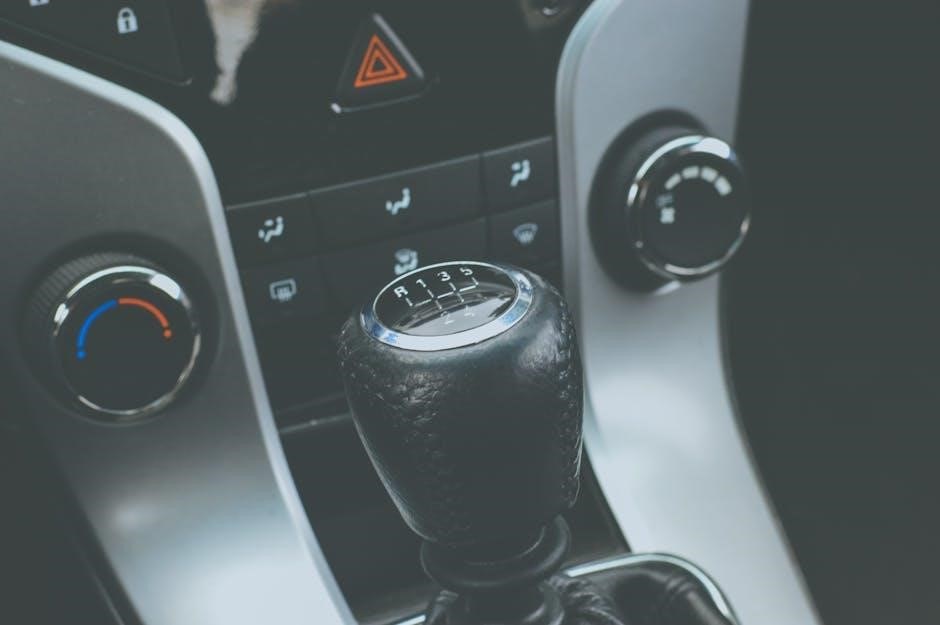
Types of Automatic Transmissions
Automatic transmissions include traditional automatics, continuously variable transmissions (CVT), dual-clutch transmissions (DCT), and automated manual transmissions (AMT), each offering unique performance and efficiency characteristics․
Traditional Automatic Transmission (AT)
A traditional automatic transmission (AT) uses a torque converter to automatically change gears, eliminating the need for manual shifting․ It operates smoothly, providing ease of use in heavy traffic and reducing driver fatigue․ ATs are known for their seamless acceleration and intuitive design, making them ideal for urban driving․ They are widely popular due to their convenience and simplicity, requiring no clutch pedal or manual gear selection․ However, ATs generally have higher maintenance costs and slightly lower fuel efficiency compared to manual transmissions․ Despite this, they remain a preferred choice for many drivers who prioritize ease and comfort․ Modern ATs continue to evolve, offering improved performance and efficiency while maintaining their signature simplicity․
Continuously Variable Transmission (CVT)
A Continuously Variable Transmission (CVT) operates without fixed gear ratios, instead using belts or chains to provide an infinite range of gear ratios․ This allows the engine to maintain optimal RPM for better fuel efficiency․ CVTs are known for their smooth acceleration and are often used in hybrid vehicles․ However, they can feel unusual to drive due to the lack of distinct gear shifts․ While they offer improved gas mileage, especially in city driving, they are generally less popular than traditional automatics․ CVTs also tend to have higher repair costs and are less common in high-performance vehicles․ Despite these limitations, they remain a practical choice for drivers seeking enhanced fuel efficiency without the complexity of manual shifting․
Dual-Clutch Transmission (DCT)
A Dual-Clutch Transmission (DCT) combines the efficiency of a manual transmission with the convenience of an automatic․ It uses two clutches to pre-select gears, allowing for faster and smoother shifts․ DCTs are known for their quick response and are often used in high-performance vehicles․ Unlike traditional automatics, DCTs do not use a torque converter, which reduces power loss and improves fuel efficiency․ However, DCTs can feel jerky in stop-and-go traffic and may require more maintenance than traditional automatics․ Despite these drawbacks, they are favored in sporty cars for their precise control and rapid gear changes․ DCTs strike a balance between performance and practicality, making them a popular choice for drivers who want both efficiency and driving engagement․
Automated Manual Transmission (AMT)
The Automated Manual Transmission (AMT) is a hybrid system that combines elements of manual and automatic transmissions․ It uses a conventional manual gearbox but automates the clutch operation and gear shifting․ AMTs are cost-effective and fuel-efficient, making them popular in budget-friendly vehicles․ They are particularly common in developing markets where affordability is a priority․ However, AMTs can feel less refined compared to dual-clutch or traditional automatics, often exhibiting slight delays or jerkiness during gear changes․ Despite this, they offer a practical solution for drivers who want the benefits of a manual transmission without the constant need to operate a clutch pedal․ AMTs are a stepping stone toward more advanced automatic technologies, providing a balance between simplicity and convenience․

Types of Manual Transmissions
Manual transmissions come in standard, automated, and intelligent variants, each offering unique driving experiences․ They provide control, efficiency, and engagement for drivers seeking a hands-on connection with their vehicle․
Standard Manual Transmission
A standard manual transmission requires the driver to manually shift gears using a clutch pedal and gearshift․ This system provides excellent control over the vehicle, allowing drivers to optimize acceleration and speed․ It is typically more fuel-efficient than automatic transmissions, with studies showing improvements of 2 to 5 miles per gallon․ Additionally, manual transmissions are generally cheaper to purchase and maintain, with fewer complex components․ They are favored by driving enthusiasts for the direct connection they offer between the driver and the car․ However, they can be less convenient in heavy traffic due to the constant need for clutch operation․ Despite declining popularity, standard manual transmissions remain a preferred choice for many drivers seeking an engaging experience․
An Automated Manual Transmission (AMT) combines elements of both manual and automatic systems․ It uses a manual gearbox but automates the clutch operation and gear shifting, eliminating the need for manual clutch input․ AMTs are often more affordable and fuel-efficient than traditional automatics, making them popular in budget-friendly and compact vehicles․ They are particularly advantageous in heavy traffic conditions, as they reduce driver fatigue by automating gear shifts․ However, AMTs can lack smoothness during acceleration and may feel jerky compared to conventional automatics or dual-clutch transmissions․ Despite this, they offer a practical compromise for drivers seeking convenience without the higher costs of advanced automatic systems․
Intelligent Manual Transmission (iMT)
The Intelligent Manual Transmission (iMT) is an advanced version of manual transmission that enhances driving efficiency and ease․ Unlike traditional manuals, iMT systems eliminate the clutch pedal, allowing drivers to shift gears manually without pressing a clutch․ This design simplifies driving, especially in stop-and-go traffic, while retaining the control and engagement of a manual transmission․ iMT often integrates with other technologies, such as automated rev-matching during downshifts, to provide smoother deceleration and improved performance․ It appeals to drivers who enjoy the connection of a manual gearbox but seek modern convenience․ However, iMTs may lack the precision and feedback of traditional manuals, making them less popular among purists who prefer a more tactile driving experience․ Despite this, they offer a modern take on manual transmissions, blending heritage with innovation․
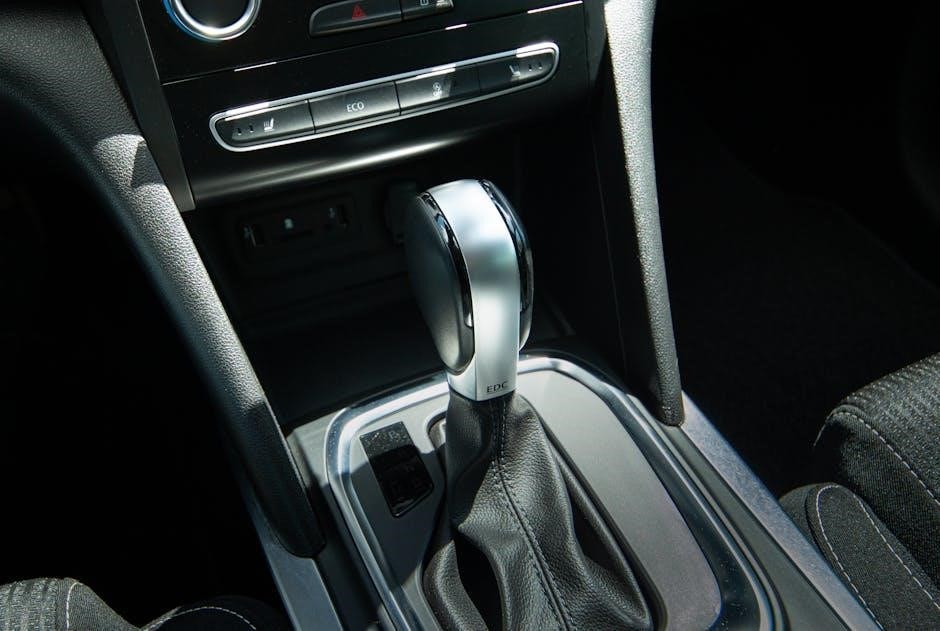
Pros and Cons of Automatic Cars
Automatic cars offer ease of driving in traffic and reduced fatigue, but they often come with higher costs for parts and labor, making maintenance more expensive․
Advantages of Automatic Transmissions
Automatic transmissions offer unparalleled convenience, especially in heavy traffic, as they eliminate the need for constant clutch operation․ This reduces driver fatigue and allows for smoother acceleration․ Additionally, automatic cars are ideal for new drivers, as they simplify the learning process․ Modern automatic transmissions often include advanced features like adaptive shifting, which optimizes gear changes based on driving conditions; They also provide better low-speed maneuverability, making parking and city driving easier․ Furthermore, automatics are generally more comfortable for long-distance trips, as they reduce the physical effort required to drive․ Some automatic transmissions even offer improved fuel efficiency in specific driving scenarios, as noted by Consumer Reports․ Overall, automatic transmissions strike a balance between ease of use and performance, making them a popular choice for many drivers․
Disadvantages of Automatic Transmissions
Automatic transmissions are generally more expensive to purchase and maintain compared to manual transmissions․ They often require specialized mechanics, increasing repair costs․ Additionally, automatics tend to be less fuel-efficient than manuals, especially in city driving, which can lead to higher fuel expenses over time․ Some drivers also find automatics less engaging, as they lack the control and connection to the vehicle that manual shifting provides․ Furthermore, automatic transmissions can be heavier, slightly affecting handling and performance․ While modern automatics have improved, they still may not match the precision and driver involvement of manual gearboxes, making them less appealing to driving enthusiasts․ Overall, while automatics offer convenience, they come with trade-offs in cost, efficiency, and driving experience․
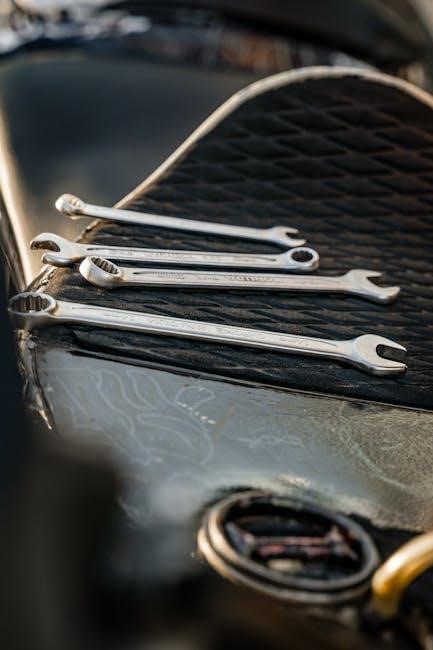
Pros and Cons of Manual Cars
Manual cars offer greater control and fuel efficiency but require more driver effort․ They are cost-effective but can be tiring in heavy traffic, balancing convenience and engagement․
Advantages of Manual Transmissions
Manual transmissions offer several benefits, including improved fuel efficiency, lower purchase costs, and enhanced driver engagement․ They provide greater control over gear shifts, allowing drivers to optimize performance and traction in various driving conditions․ Additionally, manual cars typically require less complex engineering, reducing weight and increasing responsiveness․ This connection to the vehicle makes driving more enjoyable for enthusiasts․ Furthermore, manual transmissions often have lower maintenance and repair costs compared to automatics․ They also encourage better driving habits, as drivers must actively manage gears, reducing excessive acceleration and wear on the vehicle․ Overall, manual transmissions are a practical and engaging choice for many drivers, balancing cost-effectiveness with driving satisfaction․
Disadvantages of Manual Transmissions
Manual transmissions have several drawbacks, including a steeper learning curve for new drivers, as mastering clutch and gear coordination can be challenging․ They are less convenient in heavy traffic, requiring frequent gear shifts and clutch operation, which can be tiring․ Manual cars may also struggle with smooth low-speed maneuvers, such as parking or crawling in traffic, leading to potential stalling․ Additionally, manual transmissions are less common in luxury or high-performance vehicles, limiting options for some buyers․ In hilly or mountainous terrain, manual cars require constant gear adjustments to avoid rolling backward or losing momentum․ Finally, modern automatic transmissions have narrowed the gap in fuel efficiency, making manuals less advantageous for some drivers․ These factors can make manual cars less appealing for those prioritizing convenience and ease of use․
Performance and Fuel Efficiency
Manual transmissions often deliver better fuel economy and performance, with faster acceleration, while automatics prioritize convenience and smoother driving, especially in traffic conditions․
Fuel Efficiency Comparison
Manual transmissions generally offer better fuel efficiency, with improvements of 2 to 5 mpg compared to automatics in some cases, especially in city driving․ However, modern automatics, such as CVTs and dual-clutch transmissions, have narrowed this gap․ Automatics often excel in highway driving due to optimized gear ratios and torque converters, while manuals provide more driver control, which can lead to efficient driving habits․ The choice between the two ultimately depends on driving conditions and personal preference․ Recent advancements in automatic technologies have made them more competitive, though manuals still retain a slight edge in fuel economy for many drivers․
Performance Differences Between Automatic and Manual
Manual transmissions typically provide quicker acceleration and more direct driver control, especially in sports cars, due to the ability to manually shift gears․ Automatics, particularly modern dual-clutch transmissions, can offer faster shifting than manuals in performance modes․ However, traditional automatics may lag slightly in responsiveness․ Manuals allow drivers to optimize engine RPM for better performance, enhancing the driving experience․ Conversely, automatics simplify driving, reducing driver fatigue and allowing focus on steering dynamics․ The choice between the two often comes down to whether prioritizing outright performance or convenience is more important․ Modern advancements have reduced the performance gap, making automatics a viable option for enthusiast drivers․
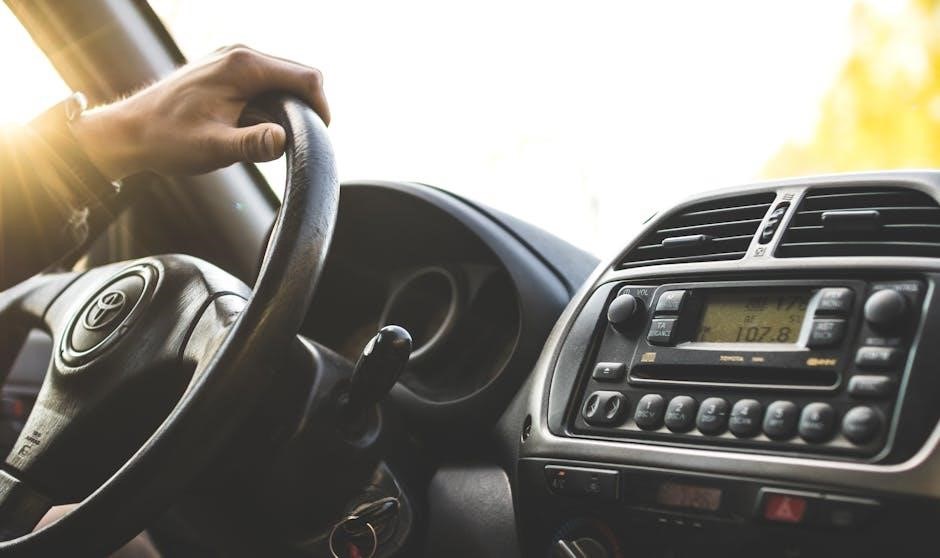
Maintenance and Repair Costs
Maintenance costs for manual and automatic cars vary, with manuals generally being simpler and cheaper to repair․ Automatics, with complex components like torque converters, often incur higher repair bills․
Maintenance Requirements for Automatic Transmissions
Automatic transmissions require regular maintenance to ensure smooth operation and longevity․ Routine fluid changes are essential, as the fluid cools and lubricates internal components․ Filters should also be replaced periodically to prevent contamination․ Additionally, the torque converter, a critical part of automatic transmissions, must be checked for proper function․ Neglecting these tasks can lead to costly repairs․ Mechanics often recommend inspecting the transmission pan for leaks and ensuring all seals are intact․ While some car owners handle basic maintenance themselves, others prefer professional services for more complex checks․ Proper care can significantly extend the life of an automatic transmission and prevent major issues down the road․
Maintenance Requirements for Manual Transmissions
Manual transmissions generally require less maintenance than automatics but still need regular checks to ensure optimal performance․ The clutch system, a key component, should be monitored for wear and replaced when necessary․ Gear oil changes are essential, though less frequent than in automatics․ Drivers should also inspect the driveshaft and axle for damage or leaks; Unlike automatics, manual transmissions do not use transmission fluid, simplifying maintenance․ However, improper shifting or riding the clutch can lead to premature wear․ Regular inspections of the transmission mounts and linkages are recommended to prevent issues․ While manual transmissions are mechanically simpler, neglecting maintenance can lead to costly repairs․ Proper care ensures a smooth and responsive driving experience․
Repair Costs Comparison
Repair costs for automatic and manual transmissions differ significantly due to their complexity․ Automatic transmissions often require more expensive parts and labor, with components like torque converters and solenoids adding to the cost․ Manual transmissions, while simpler, may need clutch replacements and gearset repairs, which are generally less costly․ On average, automatic transmission repairs can range from $1,000 to $5,000 or more, depending on the issue․ Manual transmission repairs typically range from $500 to $2,000․ Additionally, automatics may require specialized tools and diagnostics, increasing costs․ However, manuals are more prone to wear from driver error, such as riding the clutch․ Overall, manuals tend to be more cost-effective in repairs, though both systems can vary widely based on the specific problem and vehicle make․

Driving Experience and Convenience
Automatic cars simplify urban driving by eliminating manual shifting, while manuals offer more control and driver engagement, catering to different preferences for ease and precision behind the wheel․
Ease of Driving in Traffic
Automatic cars excel in heavy traffic due to their ease of use, as they eliminate the need for constant gear shifting․ This reduces driver fatigue and allows for smoother transitions between stopping and starting․ Manual transmissions, while offering more control, require frequent clutch operation in traffic, which can be tiring and less convenient․ Automatics enable drivers to keep both hands on the wheel, focusing solely on steering and road awareness․ In contrast, manuals demand more skill and attention, especially in stop-and-go situations․ For urban driving, automatics are generally preferred for their simplicity and comfort, whereas manuals are better suited for experienced drivers who enjoy the engagement․ Ultimately, the choice depends on personal preference and driving conditions․
Driver Control and Engagement
Manual transmissions provide drivers with greater control over the vehicle, as they can manually select gears to suit driving conditions․ This engagement enhances acceleration and deceleration, making it ideal for performance driving․ Automatic transmissions, while convenient, reduce driver involvement by handling gear shifts automatically․ However, modern automatics, such as dual-clutch transmissions, offer quick shifts that mimic manual-like control․ Manual driving requires skill and attention, fostering a deeper connection between the driver and the car․ In contrast, automatics prioritize ease and comfort, making them less engaging but more accessible to all drivers․ The choice between the two often comes down to personal preference: manuals for enthusiasts seeking control and automatics for those prioritizing convenience and simplicity․
Modern Advancements in Transmissions
Modern transmissions include dual-clutch systems for rapid shifting, continuously variable transmissions for smooth acceleration, and automated manual transmissions that blend manual control with automatic convenience․
Semi-Automatic and Dual-Clutch Technologies
Semi-automatic and dual-clutch transmissions (DCTs) offer a blend of manual control and automatic efficiency․ DCTs use two clutches to pre-select gears, enabling faster shifts and smoother acceleration․ They are widely used in high-performance vehicles, providing precise control while maintaining the convenience of an automatic transmission․ Semi-automatic systems, like automated manual transmissions (AMT), use electronic actuators to shift gears without a clutch pedal, combining the simplicity of manuals with the ease of automatics․ These technologies enhance driving dynamics, reduce fuel consumption, and cater to both performance enthusiasts and everyday drivers, making them a popular choice in modern vehicles․
Future Trends in Transmission Systems
Future transmission systems are expected to focus on hybridization and advanced automation․ Hybrid transmissions will combine manual and automatic elements for optimal efficiency․ Electric vehicles will dominate, with simpler, more efficient gear systems․ AI-driven predictive shifting technologies will optimize performance and fuel efficiency․ Modular transmission designs will allow customization for various vehicle types․ These innovations aim to enhance driving experiences while reducing environmental impact, ensuring transmissions adapt to evolving automotive demands․
The choice between automatic and manual cars depends on personal preference, driving conditions, and technological advancements, shaping the future of automotive transmissions and driving experiences worldwide․
Final Thoughts on Choosing Between Automatic and Manual
Choosing between automatic and manual cars depends on personal preference, driving habits, and lifestyle․ Automatics offer convenience, especially in heavy traffic, while manuals provide better control and engagement․ Fuel efficiency and maintenance costs also play a role, with manuals often being more economical․ Modern advancements like automated manual transmissions (AMTs) and dual-clutch technologies blur the line between the two․ Ultimately, the decision should align with individual needs, whether prioritizing ease, performance, or cost-effectiveness․ As automotive technology evolves, both options remain viable, catering to diverse driver preferences and road conditions․
